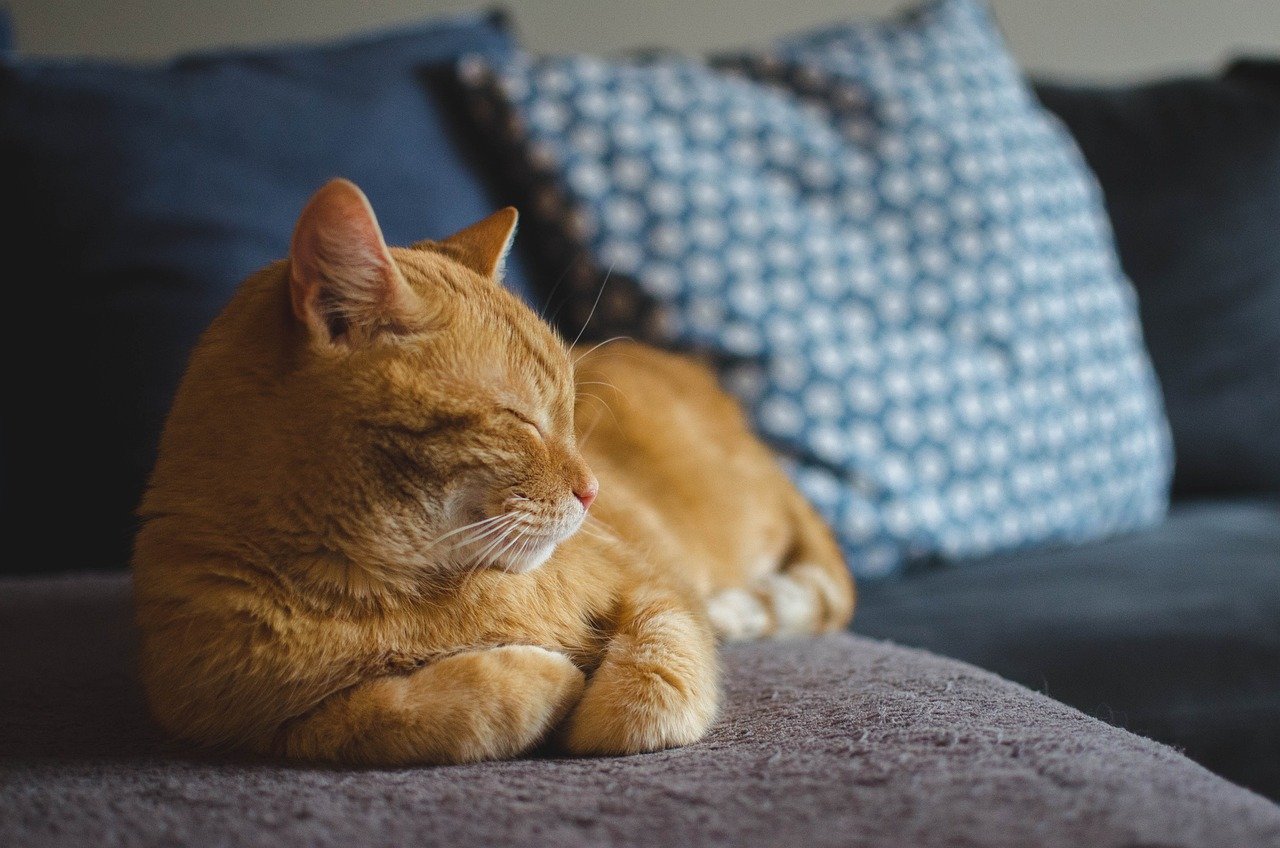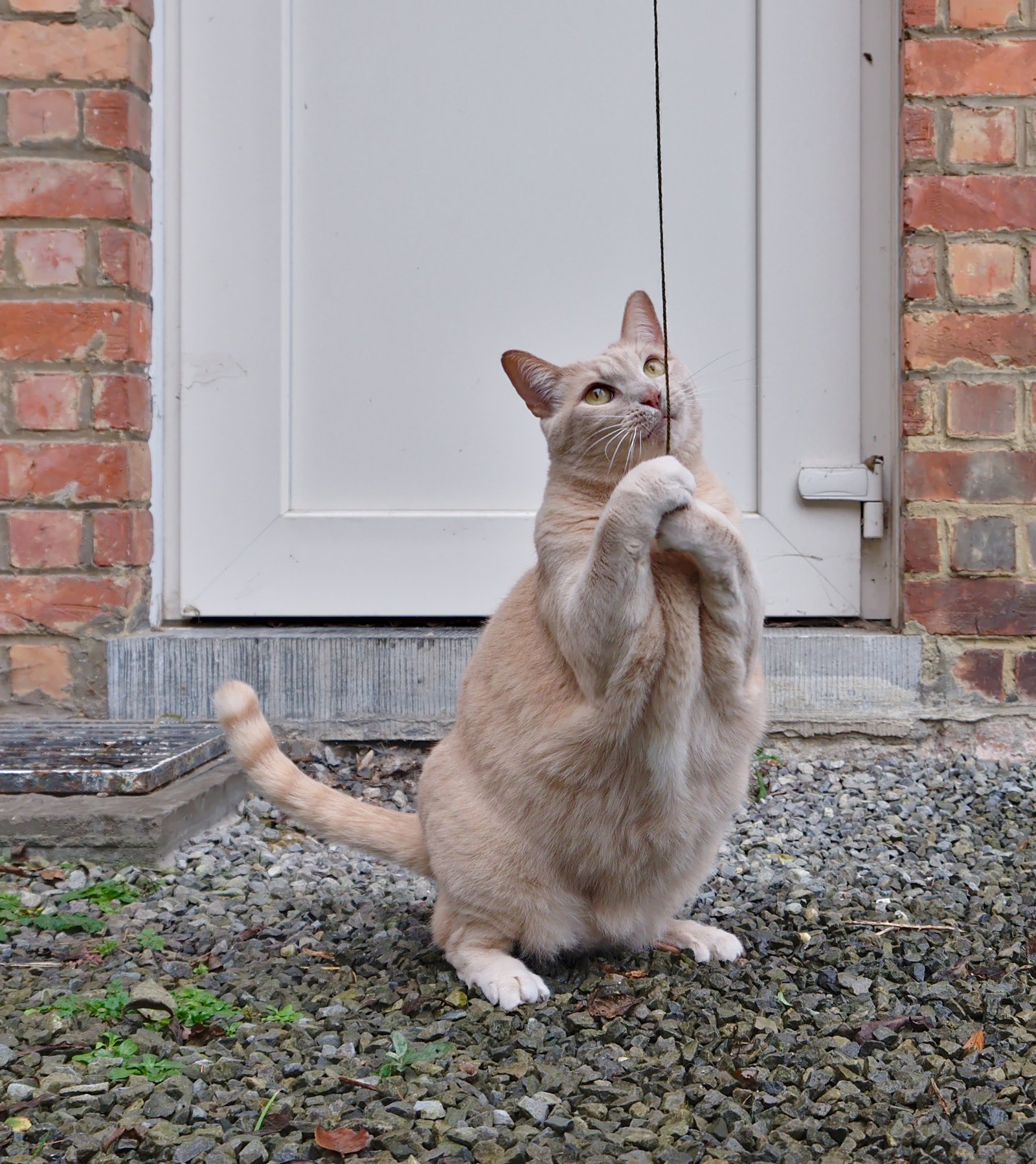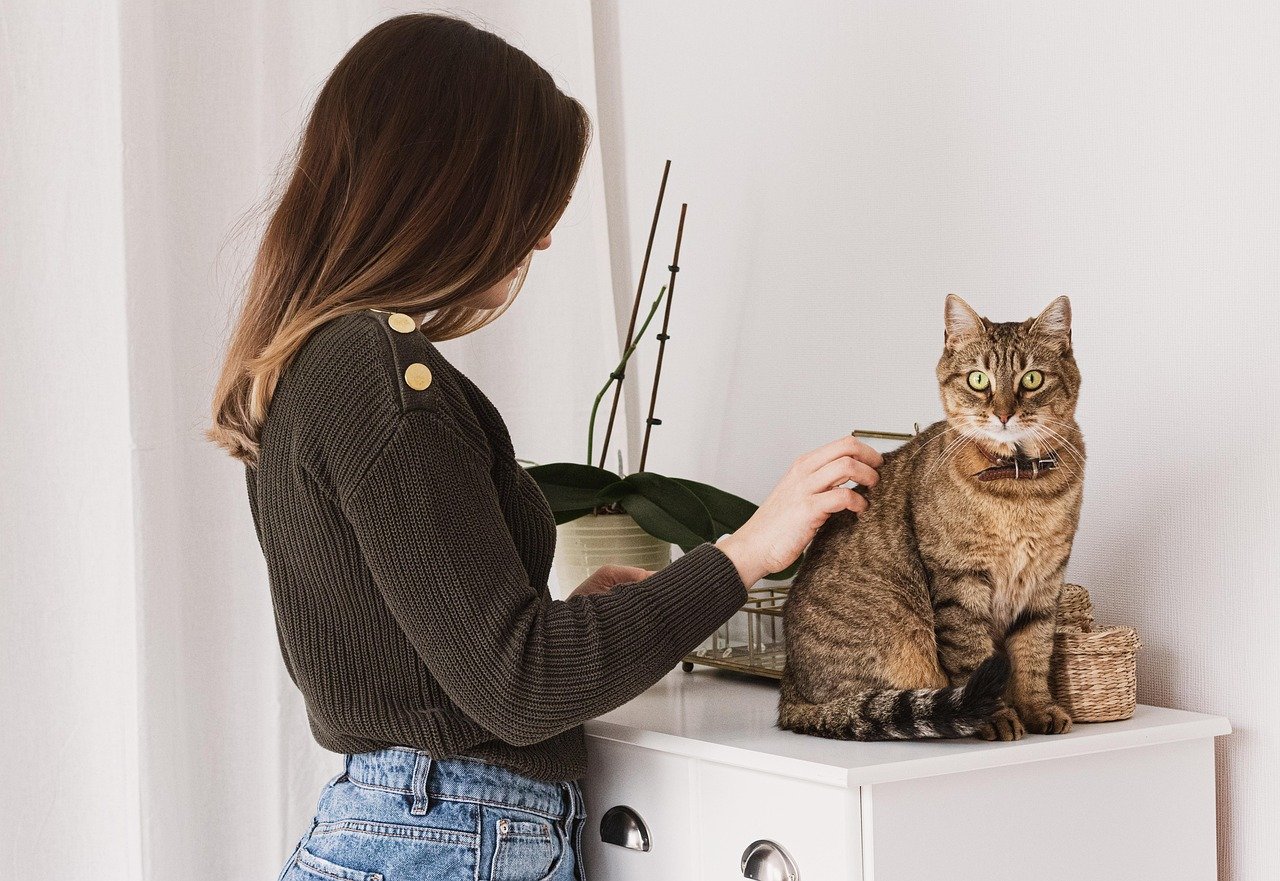Have you ever reached out to comfort your cat, only to see them shrink away or hide under the bed? It can feel heartbreaking and confusing. Cats are mysterious creatures, and their silent signals can be tough to read. While we long to comfort them in times of stress, too much attention can sometimes make things worse. Learning to soothe a cat without overwhelming them is a delicate dance—one that can deepen trust and bring you closer together. Let’s explore the gentle art of comforting our feline friends in ways that truly respect their boundaries and personalities.
Understanding Your Cat’s Body Language

Cats are experts at communicating with their bodies. A flicking tail, flattened ears, or dilated pupils can be their way of saying, “I’m scared” or “I need space.” On the other hand, slow blinks, kneading paws, and a softly waving tail can signal trust and comfort. Paying close attention to these signs is key to knowing when your cat wants comfort and when it’s best to give them room. By observing their subtle cues, you can respond in ways that honor their emotional needs. It’s a bit like learning a new language—one built on patience and careful observation. Remember, a cat’s body will tell you everything you need to know if you just take the time to look.
Respecting Their Personal Space

One of the simplest but most powerful ways to comfort a cat is by giving them space. Unlike dogs, cats aren’t always eager for hugs and cuddles, especially when they’re anxious. Instead, allow your cat to come to you on their own terms. If they retreat to a quiet corner or under the bed, resist the urge to pull them out or follow. Instead, sit nearby and let them know you’re available without invading their sanctuary. This silent support can be much more reassuring than physical contact. Over time, your cat will learn that you respect their boundaries, which builds trust and a sense of safety.
Using a Soft, Calming Voice

Your tone of voice can have a big impact on your cat’s comfort level. Loud, sharp noises can startle or stress out a sensitive cat. When you speak to your cat, use a gentle, soothing tone. Try talking to them as if you’re telling a bedtime story—soft, slow, and steady. Even if your cat doesn’t understand your words, they’ll sense your calm energy. Reassuring phrases, gentle hums, or even singing softly can help create a peaceful atmosphere. A calm voice says, “You’re safe here,” and that message can be more powerful than any touch.
Letting the Cat Initiate Contact

Cats are independent creatures who value autonomy. If you want to comfort your cat, wait for them to come to you. Sit quietly and extend your hand, palm down, letting them approach at their own pace. If they rub against you or nudge your hand, it’s a clear sign they’re ready for interaction. But if they walk away or ignore your offer, respect their choice. Letting your cat initiate contact reinforces the idea that their feelings matter and that comfort isn’t something you force—it’s something you share.
Providing Safe Hideaways

Every cat needs a secure spot to retreat to when the world feels overwhelming. This could be a cozy box, a covered bed, or a quiet room. Make sure your home has at least one or two safe hideaways where your cat can escape when they need a break. These spaces should be free from loud noises and disturbances, offering a sense of protection. When your cat chooses to hide, resist the temptation to coax them out; instead, let them recharge in peace. Just knowing they have a sanctuary can be incredibly comforting.
Offering Gentle Physical Touch

When your cat is open to physical comfort, gentle petting can be very soothing. Start by softly stroking their cheeks, chin, or the base of their ears—areas most cats love. Avoid petting their belly or tail unless you know your cat enjoys it, since these spots can make some cats feel vulnerable. Use slow, light movements and watch for signs of discomfort, such as twitching tails or flattened ears. If your cat leans in or purrs, you’re on the right track. If they move away, give them a break. Remember, less is often more when it comes to feline affection.
Creating a Calm Environment

A peaceful environment can do wonders for a cat’s nerves. Keep loud noises, sudden movements, and chaotic activity to a minimum, especially if your cat is already stressed. Soft lighting, gentle music, or even the hum of a white noise machine can help mask jarring sounds from outside. Consider diffusing a calming scent, like lavender or a feline pheromone, to further relax your cat. The more serene the surroundings, the easier it is for your cat to settle and feel secure.
Using Calming Scents and Pheromones

Cats respond strongly to scents, and certain smells can help them relax. Synthetic feline pheromones, available as sprays or diffusers, mimic the natural comfort signals cats produce when they feel safe. These can be especially helpful during stressful events like moving or thunderstorms. You can also try placing an item with your scent—like a worn t-shirt—near your cat’s resting area. Familiar, calming smells create a sense of continuity and comfort, especially when your cat is anxious or adjusting to change.
Allowing for Quiet Time Together

Sometimes, the best comfort is simply being present. Sit quietly with your cat, perhaps reading or meditating, letting your calm energy fill the space. You don’t have to touch or talk—your gentle presence is often enough. This shared silence can be deeply reassuring, reminding your cat that they’re not alone. Over time, these moments of quiet companionship can strengthen your bond and help your cat associate you with peace and comfort.
Playing at Their Pace

Play is an excellent way to comfort a cat, but it’s important to match their energy. Use toys that let your cat control the action, like feather wands or rolling balls. Start slow and let your cat lead the game, pausing whenever they seem tired or overstimulated. Playtime can help release stress and refocus anxious energy, but only if it’s on your cat’s terms. When the game is over, offer a soft word or treat to let them know you enjoyed the time together.
Watching for Warning Signs of Stress

A stressed cat may show clear warning signs, such as hiding, hissing, growling, or excessive grooming. Other subtle signals include dilated pupils, rapid breathing, or a tucked tail. If you notice these behaviors, back off and give your cat space. Ignoring their distress signals can cause more anxiety and erode trust. By respecting their boundaries and responding to early signs of stress, you show your cat that their feelings matter and that you’re a safe, understanding companion.
Maintaining a Predictable Routine

Cats thrive on consistency. Sudden changes in feeding times, play sessions, or litter box locations can unsettle them. Try to keep a regular schedule for meals, play, and cuddle times. If something in your home life changes, introduce new routines slowly and gently. A predictable environment helps your cat feel more secure and less likely to become overwhelmed. Even small rituals, like greeting your cat at the same time each day, can make a big difference in their comfort level.
Using Food as a Comfort Tool

Food can be a powerful comfort for many cats, but it’s important to use it thoughtfully. Offer treats or special snacks when your cat is calm, or as a reward for brave behavior during stressful situations. Avoid using food as the only way to comfort your cat, as this can create unhealthy habits. Instead, see food as one tool among many for building positive associations and trust. Sharing a meal or treat can be a quiet, joyful way to connect.
Encouraging Gentle Exploration

When your cat is nervous about new people or places, encourage gentle exploration at their own pace. Leave out familiar objects—like toys or blankets—in new areas to make them feel more welcoming. Let your cat investigate without pressure, and reward their curiosity with praise or a treat. Avoid forcing your cat into unfamiliar situations; instead, be their patient guide, offering reassurance but letting them take the lead. Every small step forward is a victory.
Responding to Fearful Behaviors

When your cat is scared, resist the urge to scoop them up or restrain them. Instead, remove any obvious stressors from the environment and give your cat space to calm down. Speak softly, avoid direct eye contact, and stay low to the ground to appear less threatening. You might try offering a favorite toy or treat nearby, but never force interaction. Your calm, non-intrusive presence will help reassure your cat that you’re a safe ally, not a source of more fear.
Building Trust Over Time

Comforting a cat is a long-term project, not a one-time fix. Every positive interaction—no matter how small—adds to your cat’s sense of safety and trust. Be patient and consistent, always responding gently to your cat’s moods and needs. Over weeks and months, your cat will come to see you as a source of comfort rather than stress. Trust is the foundation of any strong relationship, and with patience, you’ll find your bond growing deeper every day.
Using Gentle Grooming as Comfort

For many cats, gentle grooming can be deeply soothing. Use a soft brush to stroke your cat’s fur, paying close attention to their reaction. Some cats love being brushed, while others prefer only brief sessions or specific areas. Grooming isn’t just about keeping your cat clean—it’s also a way to mimic the social grooming cats do with each other. This shared ritual can be a powerful way to comfort your cat and reinforce your connection.
Letting Go of Expectations

Every cat is unique, with their own comfort zones and quirks. Some are natural lap cats, while others prefer to keep their distance. Try to let go of expectations based on other people’s cats or even your own past pets. Instead, focus on what makes your individual cat feel safe and happy. Celebrate small victories, like a shy cat sitting near you or a nervous kitten accepting a gentle pet. By honoring your cat’s individuality, you show them respect and understanding.
Recognizing When to Seek Professional Help

Sometimes, a cat’s anxiety or discomfort goes beyond what you can handle at home. If your cat shows ongoing signs of distress, aggression, or withdrawal, it may be time to consult a veterinarian or feline behaviorist. Chronic stress can have serious health consequences, so don’t hesitate to seek professional guidance. An expert can help you identify underlying issues and develop a customized comfort plan. Remember, asking for help is a sign of love and commitment to your cat’s well-being.
Building a Lifelong Bond Through Comfort

Comforting your cat is about more than soothing their nerves—it’s about building a rich, trusting relationship that lasts a lifetime. Every time you respect your cat’s boundaries, listen to their signals, and respond with kindness, you deepen your connection. Over time, your cat will come to see you as their safe haven, someone they can turn to in both joy and fear. This bond is a gift, one that brings joy, laughter, and companionship to both your lives.
Hi, I’m Bola, a passionate writer and creative strategist with a knack for crafting compelling content that educates, inspires, and connects. Over the years, I’ve honed my skills across various writing fields, including content creation, copywriting, online course development, and video scriptwriting.
When I’m not at my desk, you’ll find me exploring new ideas, reading books, or brainstorming creative ways to solve challenges. I believe that words have the power to transform, and I’m here to help you leverage that power for success.
Thanks for stopping by, Keep coming to this website to checkout new articles form me. You’d always love it!






